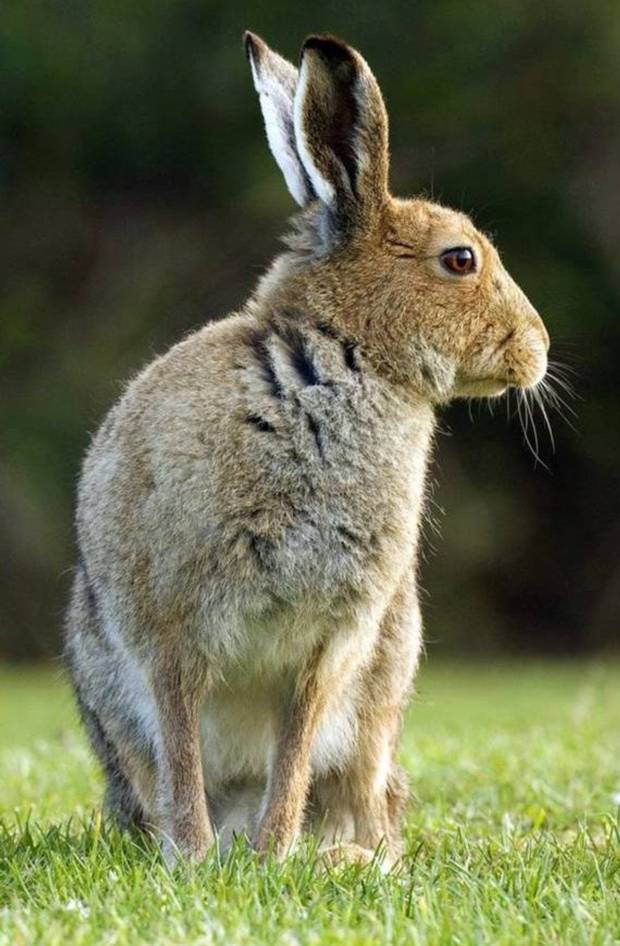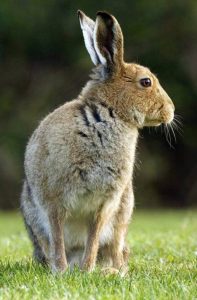Irish Extra September 2019

Irish Extra
September ‘19
Worrying times as RHD Reaches Ireland

My heart sunk this month when I read of the first few confirmed cases of RHD in Ireland. I had watched closely the situation for some time in the UK when it appeared that not only rabbits but Hares were affected by the disease. I then received an official statement from the National Parks and Wildlife Service.
“A disease fatal to rabbits and hares, but of no risk to humans, has been confirmed in the wild in Ireland for the first time. The Department of Culture, Heritage and the Gaeltacht’s National Parks and Wildlife Service (NPWS) is asking the public to report any suspected cases.
Rabbit haemorrhagic disease (RHD) was first reported in domestic (farmed) rabbits in China in 1984 killing millions of animals within one year of its discovery. By 1986 this viral disease had been found in continental Europe and has since spread globally leading to significant mortality in wild populations of rabbits.
In 2010, a new more virulent strain of this virus (RHD2) emerged in France. It causes death within a few days of infection with sick animals having swollen eyelids, partial paralysis and bleeding from the eyes and mouth. Most distressingly, in the latter states close to death, animals exhibit unusual behavior emerging from cover into the open and convulsing or fitting before dying.
The disease was reported in Ireland from domestic rabbits in 2018, but has now been confirmed in the wild from a rabbit in Co. Wicklow and another in Co. Clare. Today, the virus has been confirmed from a hare in Co. Wexford. In all cases individual animals were tested at Department of Agriculture, Food & Marine Laboratories where RHD2 was subsequently confirmed. While all three locations continue to support apparently healthy wild populations, unlike the situation in the UK where mass mortalities have been reported, NPWS Conservation Rangers continue to monitor the situation.
The virus has been detected throughout Europe, in wild rabbits, hares and seemingly unrelated species including voles and shrews. The Irish hare is native to Ireland and found nowhere else and should this disease prove as infectious and lethal here as it has done elsewhere in Europe, the impact on the hare could be catastrophic.
Dr. Ferdia Marnell of the NPWS Scientific Unit outlined his concerns: “Rabbits are central to wild ecosystems, being the main food for many predators from stoats to eagles that in turn regulate other animal populations. A decline in our wild rabbits will have numerous knock-on consequences. Of further concern is the potential for the disease to spread through the Irish hare population.”
The disease is highly contagious and can be spread directly between animals and in the faeces and urine of infected animals, as well as by insects and on human clothing. In addition the incubation period may last several days and apparently uninfected animals may in fact be carriers. Under these circumstances the catching of hares in nets, their transportation in boxes and the collection and holding of hares in confined areas can all be considered to increase the risk of disease spread.
Accordingly the Department has decided to suspend the licences issued to the Irish Coursing Club to capture and tag hares for the 2019/20 hare coursing season with immediate effect until a clearer understanding of the extent, spread and implications of the RHD2 virus emerges.
Dr. Marnell stressed “that the Rabbit Haemorrhagic disease presents absolutely no threat to human health and it is entirely safe to handle infected or recently dead rabbits or hares provided normal hygiene is followed”.
The public – particularly landowners, farmers, vets and the hare coursing community – is being asked to be on high alert and to report any suspected sightings of diseased rabbits and hares as soon as possible to help efforts to monitor and control the disease.”
This can be done by contacting the NPWS by Phone (1890 383 000) or Email (nature.conservation@chg.gov.ie.)
European Proposal to restrict Lead Ammunition
The European Commission (EC) has requested the European Chemicals Agency (ECHA) to prepare a restriction proposal addressing the risk to wildlife and humans (via the consumption of game meat) from lead in all ammunition (shot and bullets) including target shooting. Lead in fishing weights is also included in the request. The EC’s letter to ECHA, which became public on 21 August 2019, also asks ECHA to assess issues linked to animal welfare, potential accidents to hunters using lead ammunition and its alternatives.
FACE understands that ECHA will publish the dossier on its ‘Registry of Intentions’ in the coming months. From there, ECHA is required to prepare a restriction proposal within 12 months. If ECHA’s proposal recommends that further action is necessary, the agency will begin preparing a restriction on all lead in ammunition with its Committee for Risk Assessment ( RAC ) and its Committee for Socio-Economic Analysis ( SEAC ) committees. At that stage, there will be consultations with relevant stakeholders including FACE, which also sits on ECHA’s decision-making committees.
Although FACE supports phasing out the use of lead shot over wetlands, it does not support general bans on lead in ammunition. From FACE’s perspective, any further measures beyond lead shot over wetlands must be proportional with the demonstrated risks to wildlife populations and human health via game consumption (taking into account risk management measures).
This request from the EC to ECHA comes at an interesting time when the EU, through REACH, is currently working on developing an EU-wide restriction on phasing out the use of lead shot over wetlands, which emerged from an EC request to ECHA in 2015. The restriction on phasing out lead shot over wetlands has sparked frustration within the hunting community.
When the EC requested ECHA to prepare a restriction on lead shot over wetlands, the same letter (03/12/2015) also asked ECHA to look into the wider impacts of lead ammunition. On 12 September 2018, based on ECHA’s assessment of the wider impacts of lead ammunition, ECHA issued the following Press Release recommending that “that measures are needed to regulate the use of lead ammunition in terrestrial environments in addition to those proposed for wetlands”. The Press Release is based on this report: ‘Review of the available information on lead in shot used in terrestrial environments, in ammunition and in fishing tackle’.
On a brighter note – By the time you read this the season will be well and truly opened and I may have a duck, a fox, a few rabbits or maybe all three in the bag by then! I am so very glad to see winter coming as it has been an unbelievable busy summer for me which is quite the opposite as it is usually a more laid back time of year! I have been working quite literally non-stop and look forward to dark evenings and all the sport that it brings with it! I hope by now you have checked all your gear, serviced your gun and prepared your vehicle for winter. I hope you have an enjoyable, plentiful and injury free season.
Until Next time…Good Hunting!